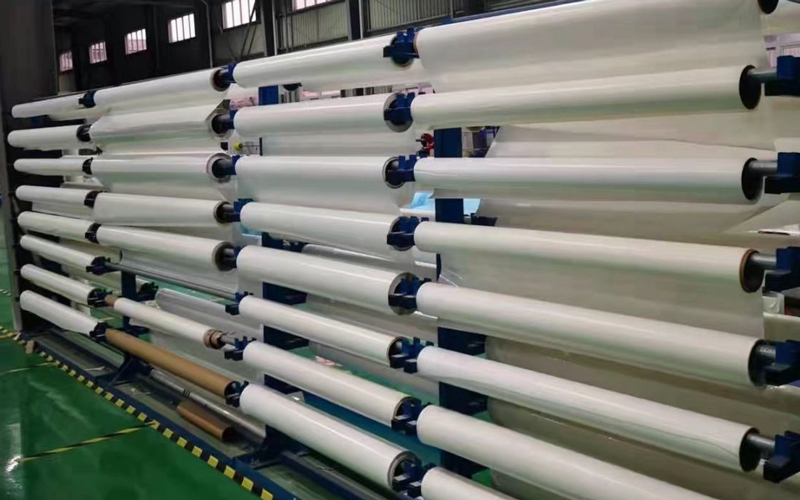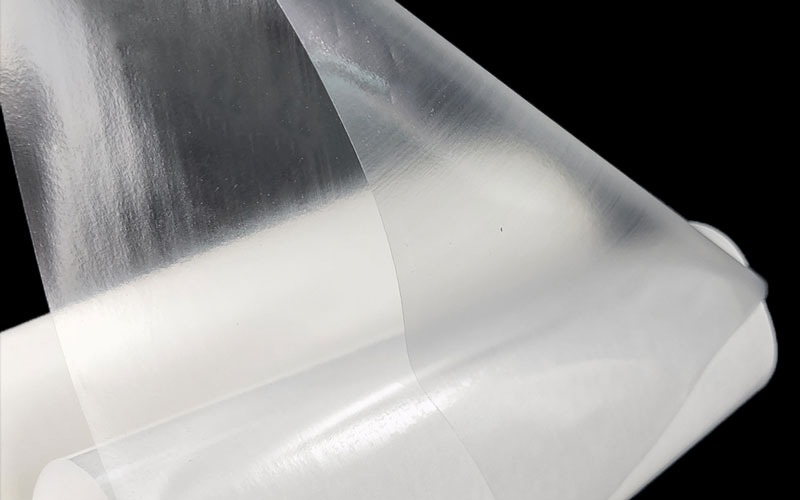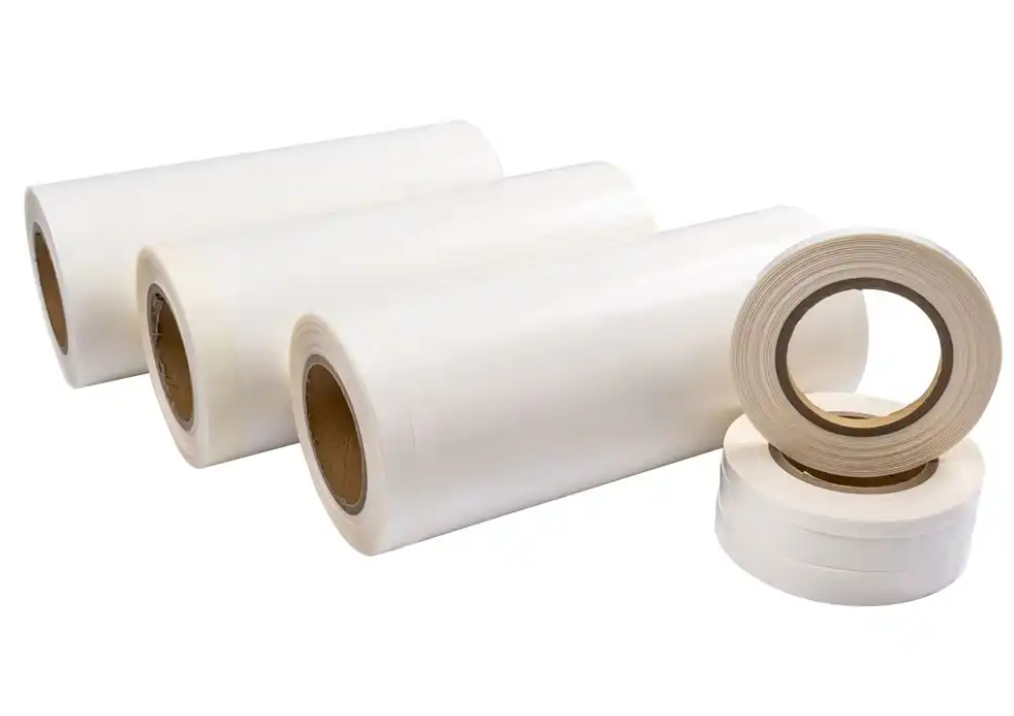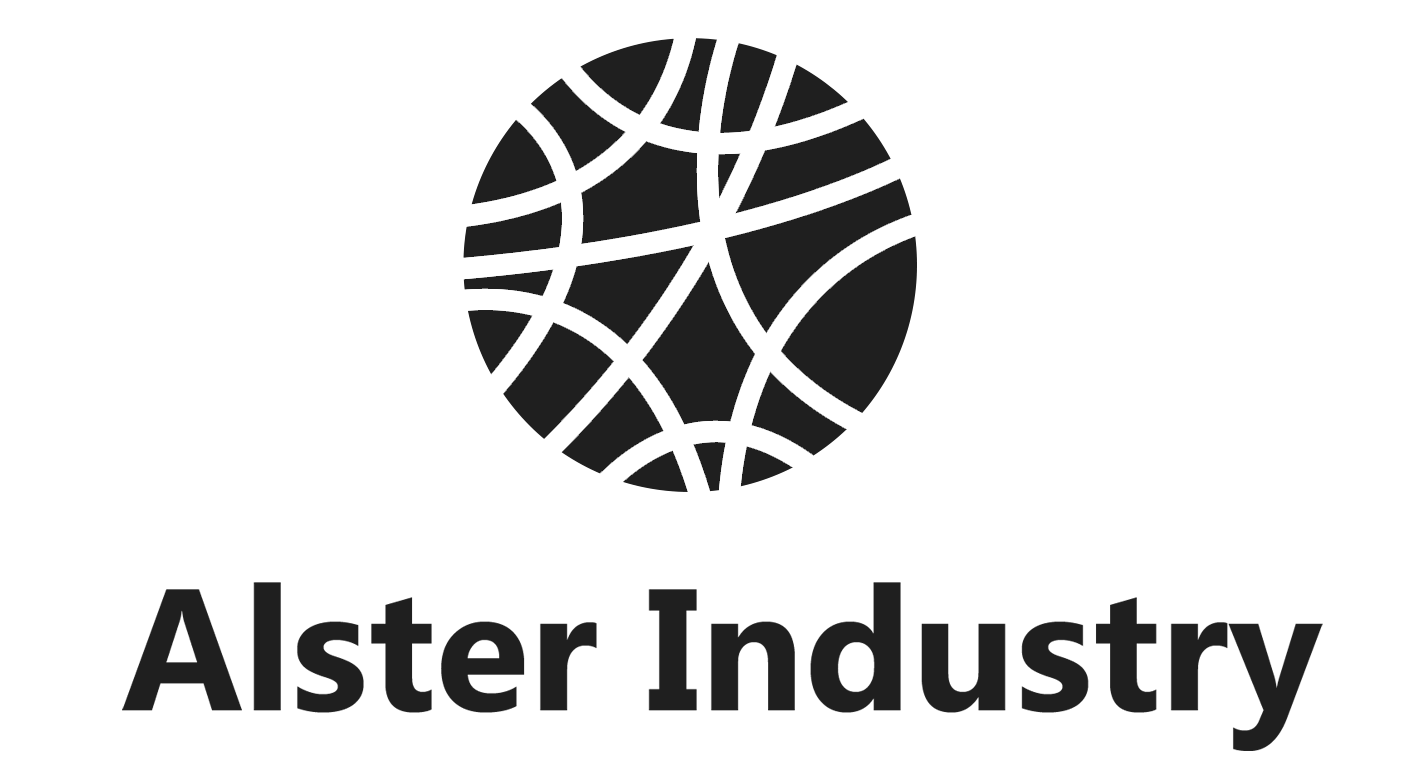In the garment manufacturing industry, precision, efficiency, and product consistency are key to maintaining quality and customer satisfaction. One crucial step in ensuring these qualities is the hot melt adhesive film cutting process. At Alster, a professional manufacturer specializing in hot melt adhesive films for apparel applications, we understand the importance of transforming full-size adhesive sheets into narrow, customized rolls for various industrial uses. This article explores the full process, types of equipment used, and how Alster ensures a high-quality cutting standard in every production batch.

What is Hot Melt Adhesive Film?
Hot melt adhesive film is a thermoplastic bonding material that becomes tacky upon heating and forms a strong bond between substrates once cooled. Unlike liquid glues, hot melt adhesive films are solid at room temperature and provide a cleaner, more efficient bonding method without the use of solvents or water. These films are widely used in the apparel industry for:
Seamless bonding of fabrics
Heat transfer labels
Embroidery patch adhesion
Fabric-to-fabric lamination
Sportswear and lingerie reinforcement
Alster provides films in various types, such as TPU (thermoplastic polyurethane), EVA (ethylene-vinyl acetate), PA (polyamide), and PES (polyester), tailored to specific garments’ needs in flexibility, washing resistance, and bonding strength.
Why Cutting Is Crucial in Production
Once hot melt adhesive films are manufactured in large sheets or jumbo rolls, they need to be cut into narrower rolls or sheets to suit downstream applications. This cutting process is essential for several reasons:
Customization: Different garment factories require varying roll widths (e.g., 10mm, 20mm, 30mm) for specific machines and components.
Efficiency: Small rolls are easier to handle, store, and load into automatic bonding machines.
Precision: Accurate cuts ensure clean edges and consistent bonding, which is critical in high-speed garment production lines.
Waste Reduction: Optimized cutting reduces material waste and improves cost-efficiency.

Types of Cutting Machines Used
At Alster, we employ several types of cutting machines depending on the final product’s requirements. Each machine is selected based on accuracy, production volume, and film characteristics:
1. Slitting Machine
The slitting machine is used to slice a large mother roll into multiple narrower rolls. Equipped with circular or razor blades, it allows for adjustable slitting width and is ideal for high-volume production. Key features include:
High cutting speed (up to 150m/min)
Multiple roll outputs per cycle
Suitable for both pressure-sensitive and thermoplastic films
2. Rewinding and Slitting Machine
This multi-function system combines slitting with rewinding. It not only cuts the adhesive film into smaller widths but also rewinds the finished rolls with new paper cores for shipping and use. This helps in maintaining roll tension, smooth edges, and customized roll lengths.
3. Sheet Cutter
When clients need hot melt adhesive films in sheet format, sheet cutters are used. This machine is particularly suited for applications such as sample development, pattern lamination, or when using heat presses with sheet-based input.
Hot Melt Adhesive Film Cutting Process Step by Step
The cutting process at Alster is designed to ensure consistent quality, minimal material loss, and high productivity. Here’s how it works:
Step 1: Film Loading
The large jumbo roll is mounted onto the unwinding unit of the slitting machine. Proper alignment and tension control are critical to prevent film shifting or wrinkling during cutting.
Step 2: Width Setup and Blade Adjustment
Based on the client’s specifications, the distance between the blades is precisely adjusted. We often customize widths such as 10mm, 20mm, or 50mm, depending on the adhesive application requirement.
Step 3: High-Precision Slitting
As the film passes through the slitting zone, high-speed blades slice it into strips. Our machines ensure:
No burrs or rough edges
No deformation or stretching of the film
Edge consistency for every roll
Step 4: Rewinding and Core Insertion
The slit films are wound onto paper or plastic cores to form smaller rolls. Core sizes (e.g., 1″, 3″) can be adjusted based on customer machinery. Proper tension control during rewinding ensures tightly wound rolls that don’t shift or loosen during transportation.
Step 5: Quality Inspection and Packaging
Every finished roll undergoes visual and dimensional inspection. Parameters such as roll width, edge condition, winding quality, and surface cleanliness are checked. Rolls that pass inspection are then labeled, sealed in protective film, and boxed for shipment.
Common Cutting Challenges and Solutions
Despite advanced machinery, certain issues can arise during cutting. At Alster, we proactively manage these challenges with process innovation:
Problem 1: Edge Fraying or Burrs
Cause: Dull blades or uneven tension
Solution: Regular blade sharpening and automated tension control systems
Problem 2: Film Adhesion to Blades
Cause: Heat-sensitive or soft adhesives
Solution: Using non-stick Teflon-coated blades and adjusting cutting temperature
Problem 3: Inconsistent Roll Widths
Cause: Misaligned blades or manual error
Solution: Precision blade adjustment tools and digital width calibration
By continuously improving our cutting processes and upgrading machinery, we minimize defects and ensure every roll meets strict industrial standards.

Alster’s Cutting Capabilities
As a full-service hot melt adhesive film supplier, Alster integrates cutting into our production line to offer flexible delivery formats. Highlights of our cutting services include:
Roll Width Range: From 5mm to 1500mm
Core Sizes: 1-inch and 3-inch available
Custom Roll Lengths: Based on customer requests
Tight Tolerances: Width error within ±0.2mm
Multiple Substrates: TPU, EVA, PES, PA films all supported
We also maintain a dust-free cutting environment to avoid contamination—especially important for adhesive films used in high-end garments or medical textiles.
Conclusion
The cutting process of hot melt adhesive films is an essential step in transforming base materials into usable, application-ready formats. At Alster, our advanced cutting systems and experienced team ensure every roll of adhesive film is delivered to exact specifications. Whether you’re in need of ultra-narrow rolls for delicate garment bonding or wide-width films for automated lamination, we provide flexible, high-quality cutting solutions tailored to your production line.
For garment manufacturers seeking reliable, clean, and customizable hot melt adhesive films—Alster is your trusted partner. Contact us to learn more about our products and precision cutting services.
